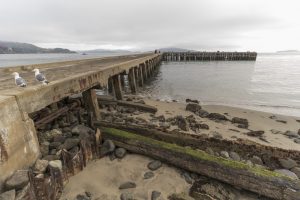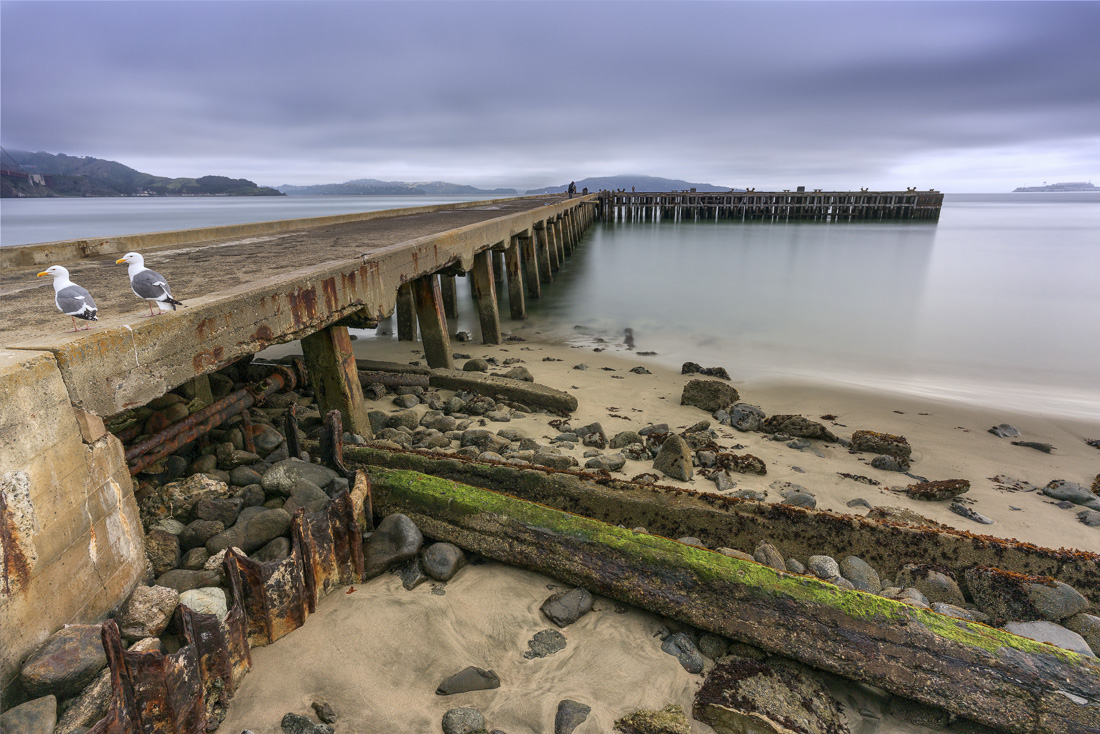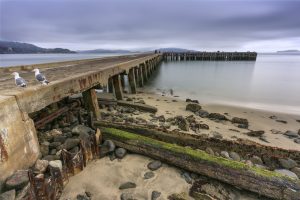This is my set up:
- Sony A7RII Mirrorless Full Frame camera
- Zeiss Batis 18mm F2.8 lens
- Breakthrough Photography 6 stop 77mm ND filter
- Breakthrough Photography 10 stop 77mm ND filter
- Breakthrough Photography 15 stop 77mm ND filter
- Xume lens adapter ring
- Xume filter holder
- Xume lens caps
Thought process on the lens selection:
Earlier this year I was looking for the perfect ultra wide angle lens to go with my Sony A7RII Mirrorless Full Frame camera. Initially I wasn’t in the mindset of doing a lot of due diligence and bought the Rokinon 14mm F2.8 AF back when it had a much higher rating on Amazon. I took it to the San Francisco Botanical Gardens to test it out, and I tossed every single photo from that shoot, boxed the lens up and sent it back. That was a lesson well learned. What was promised: sharp, low distortion, ultra-wide images. What was delivered: super soft images, even in the center, even when manual focused, with the worst edge smearing, and corners that were stretched & smeared to oblivion. I realized I was going to have to do a lot more homework on this category of lens.
After that I spent quite a while finding photos online taken with the different ultra-wide lenses I was considering. Even the newest lensmaker on the block, Venus, with their Venus Laowa 12mm f/2.8 with “close to zero” distortion had smearing in the edges & corners of many images I saw. To be fair, not all images had smearing, but it’s hard to tell from random strangers photos whether they were cropped or not, and a lot of images taken with an ultra-wide end up getting cropped. The straight lines were impressively straight with that lens, and the details were quite sharp throughout most of the image, so I’m definitely not saying that it’s a bad lens and I’m not saying you shouldn’t consider it, I’m just saying that the examples I saw and my criteria eliminated it from my consideration.
Clearly, I can’t get past the smearing with ultra-wide lenses, and it’s going to happen with every ultra-wide lens to some extent, which is disappointing. I feel it ruins the photos, and I would crop the images down to eliminate the smearing, and at that point, a 12mm or 14mm lens is pointless when your final output may as well have been taken with an 18-20mm, right? So I changed my criteria.
Lens pick:
I settled on the Zeiss Batis 18mm F2.8 lens. Holy heck it is definitely pricey, but the images I saw from this lens were fantastic, and it is now my most used lens. The front element is small enough you can still use ring filters, which is perfect for my set up for reasons I’m getting to. The sharpness, low distortion, very little smearing in corners and only with some subjects, and angles make this a great lens. The featured image at the top of this post, and the example images at the end of this post were taken with this lens.
Thought process on filter format types:
At the same time that I was looking for my ultra-wide, I was also trying to figure out my filter strategy before spending more money on the neutral density filters. I had been playing with some square filters from Lee Filters. That’s how I discovered that square filters are cumbersome to set up and take down, and I never used them as a result. That’s unfortunate because with ultra-wide lenses you usually lose the option for ring filters and have to buy an expensive setup to hold even larger, even more expensive filters. Money aside, the amount of equipment you carry with you doubles under that scenario, and I find that untenable.
In addition to the cumbersome nature of getting the whole set up on the lens, you have to focus your shot and get the shutter calculation before you put on a 10 or 15 stop filter. If you want to recompose, you have to slide it back out, hold it or put it back in a case, recompose, refocus, put it back in. The square filters also didn’t glide into my filter holder, it took some effort, and on a beach it was difficult to get the filters in without disturbing the composition. PITA.
Ring filters on their own are actually worse for a 10 or 15 stop filter because it’s hard to get the threads aligned, and you don’t want to strip the threads on the lens or the filter, and the whole remove, re-compose, re-focus, replace is so painful and time consuming. I hated it. I was thinking, why can’t these things just attach with magnets? Surely something like that has to exist, right?
Ring filters are the best choice because of magnetic mounts:
There is one brand called Xume that makes magnetic solutions for lenses & ring filters. You need one Xume lens adapter ring for each lens, and then one Xume filter holder for each filter. I also have the Xume lens caps so I never have to remove the lens adapters. The Xume system is quite easily the most favorite part of my photography set up. Using any filter with this system is a dream, particularly long exposure. Everything is fast to set up and take down. The magnets hold the filters and lens cap very snugly, and come off with just the right amount of effort. The only downside, and it is a minor one for me, is that if you want to use two filters, you have to screw the two together. If you want to use three filters, the weight of all three may be too much for the magnets to hold. I’ve never used three filters, and it is only occasionally that I will even want to use two. This also means that you can’t use the Xume lens cap and have a filter attached by the magnetic lens adapter. If the filter is meant to be semi-permanently attached like a UV filter, in which case it is fine, just set it up as follows: lens >> UV filter >> Xume lens adapter >> lens cap.
Get one filter, adapt to all your lenses:
I have three lenses right now, and they are all quite different in size, but I didn’t want to buy filters for each size, or more Xume adapters than necessary. This means I need a camera lens step ring for each of two of my smaller diameter lenses. My 18mm Zeiss lens has a 77mm ring diameter and is the largest, so Xume lens adapter goes directly onto this lens. On my 90mm macro lens, I have a 62mm diameter, and on my 28mm it is 49mm diameter. The 62mm>>77mm step ring I leave attached to my 90mm macro lens at all times with the Xume lens adapter attached to it. You can’t even tell the step ring is on there. For the 28mm lens, a 49mm diameter is quite small so the 49mm>>77mm step ring is a bit more obtrusive in a smaller camera bag so I usually don’t leave it attached.
Selection criteria for ND filters:
Onto the actual neutral density filters. I tried a couple of highly rated ND filters, and was disappointed. My ideal test is to be able to blend two photos seamlessly together, one a fast exposure to capture moving objects like leaves, people, animals and freeze them, a second image as a long exposure to smooth out clouds, water, and distracting people. A perfect ND filter would mean the only thing I should have to adjust between two photos to blend them would be the exposure, since it’s usually a bit off when you take one at 1/200 second and another at 163 seconds (15 stop) with variable light happening throughout. The worst of the bad ND filters left so little image data that the color cast couldn’t even be fixed, details were low, and highlights & shadows were almost non-existent. Some others required a lot of effort to get the photos to match up.
ND filters that are simply perfect:
The one brand of ND filter that passed that test quite easily is Breakthrough Photography. For the example shot below I used the Breakthrough Photography 6 stop 77mm ND filter. The two images below are straight out of the camera and converted to JPG. The 6 stop shot is slightly darker, but other than that they are pretty spot-on visually. The histogram reveals how close they are in tones with a fairly close match at the darker and mid-range tones The big difference is in the highlights, which are where most of the motion is happening and being smoothed out and is expected. For the final composition, most of the image is from the 6 stop ND shot with the birds and fishermen blended in, so mainly everything along the top of the pier.
 |
 |
 |
 |

